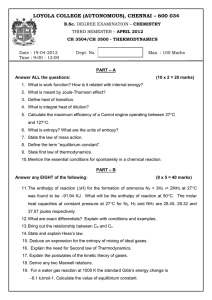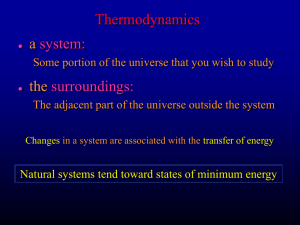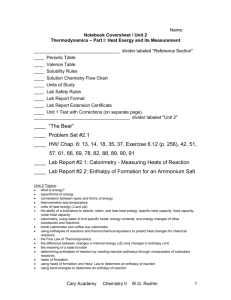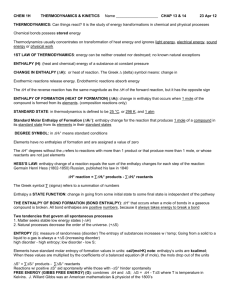Thermodynamics Formulas
advertisement
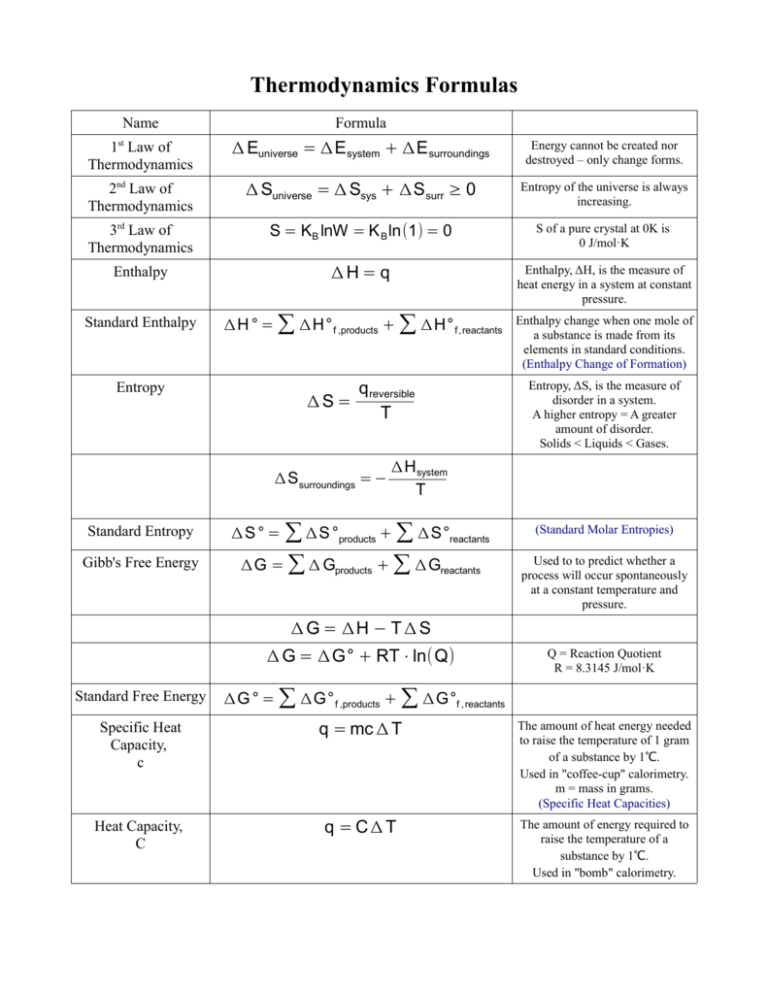
Thermodynamics Formulas Name Formula 1st Law of Thermodynamics Δ Euniverse = Δ Esystem + ΔE surroundings Energy cannot be created nor destroyed – only change forms. 2nd Law of Thermodynamics Δ Suniverse = Δ Ssys + ΔS surr ≥ 0 Entropy of the universe is always increasing. 3rd Law of Thermodynamics S = KB lnW = K B ln(1) = 0 S of a pure crystal at 0K is 0 J/mol·K Enthalpy ΔH= q Enthalpy, ΔH, is the measure of heat energy in a system at constant pressure. Standard Enthalpy Δ H ° = ∑ Δ H° f ,products + ∑ Δ H° f , reactants Enthalpy change when one mole of a substance is made from its elements in standard conditions. (Enthalpy Change of Formation) Entropy q reversible ΔS= T Entropy, ΔS, is the measure of disorder in a system. A higher entropy = A greater amount of disorder. Solids < Liquids < Gases. Δ Ssurroundings = − Δ H system T Standard Entropy Δ S ° = ∑ Δ S °products + ∑ Δ S°reactants (Standard Molar Entropies) Gibb's Free Energy Δ G = ∑ Δ Gproducts + ∑ Δ Greactants Used to to predict whether a process will occur spontaneously at a constant temperature and pressure. Δ G = ΔH − T Δ S Δ G = ΔG° + RT ⋅ln(Q) Q = Reaction Quotient R = 8.3145 J/mol·K Standard Free Energy Δ G ° = ∑ ΔG° f ,products + ∑ Δ G°f , reactants Specific Heat Capacity, c q = mc Δ T The amount of heat energy needed to raise the temperature of 1 gram of a substance by 1℃. Used in "coffee-cup" calorimetry. m = mass in grams. (Specific Heat Capacities) Heat Capacity, C q = CΔT The amount of energy required to raise the temperature of a substance by 1℃. Used in "bomb" calorimetry.





